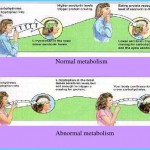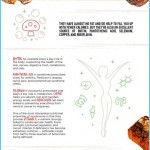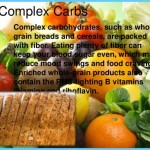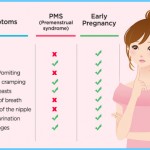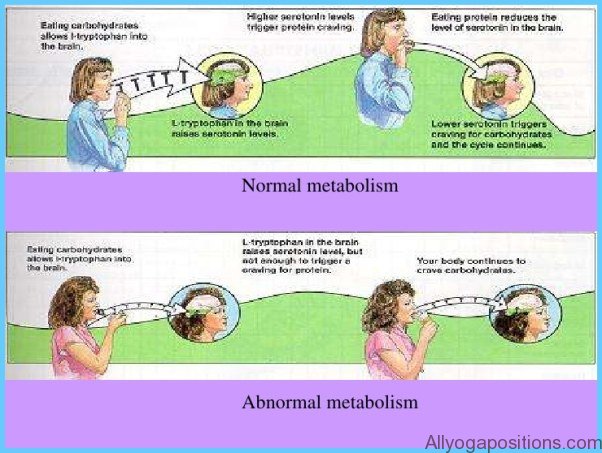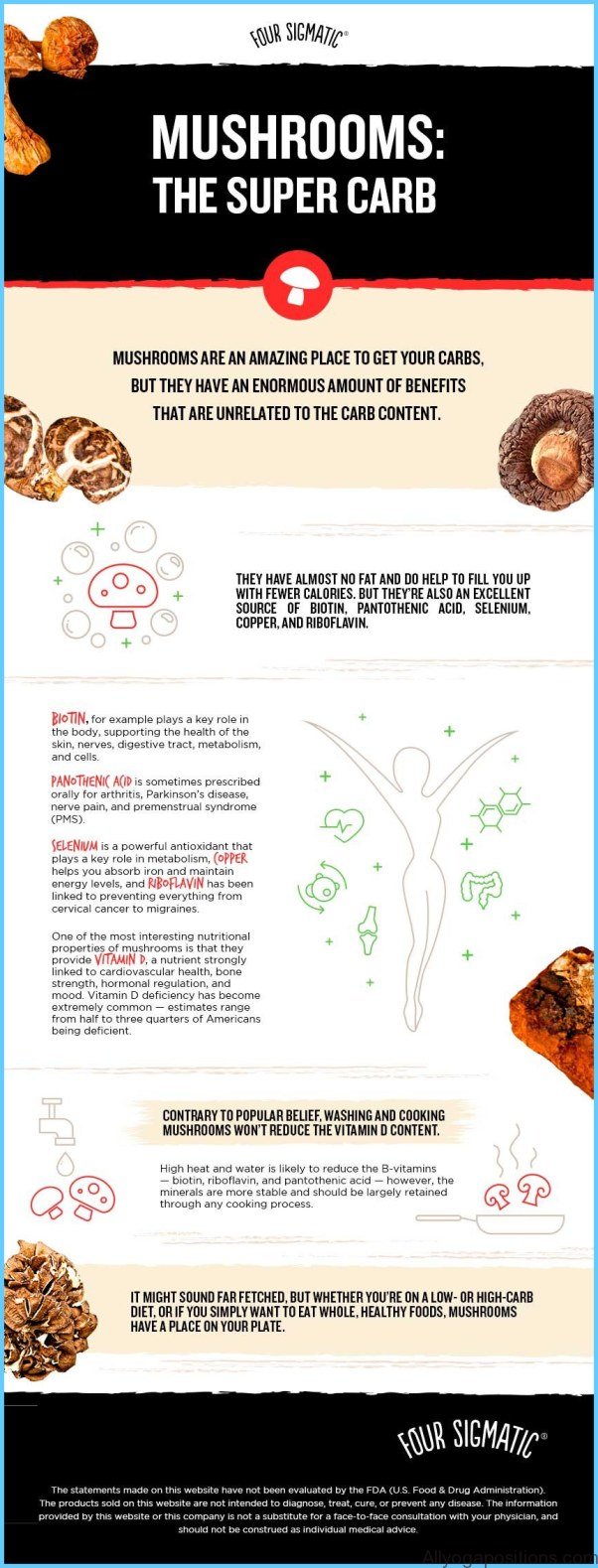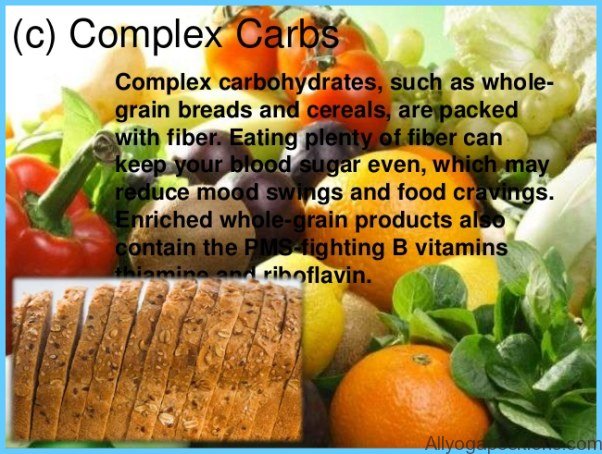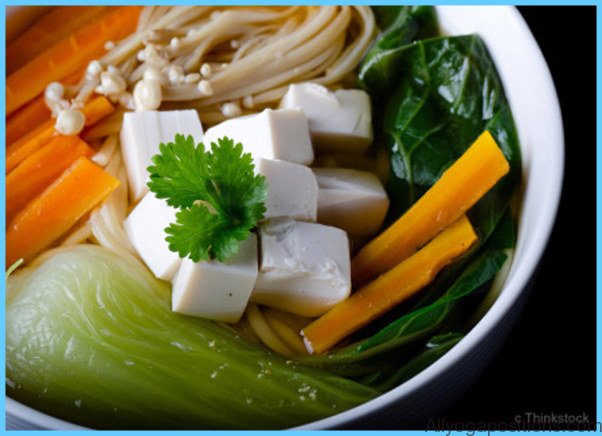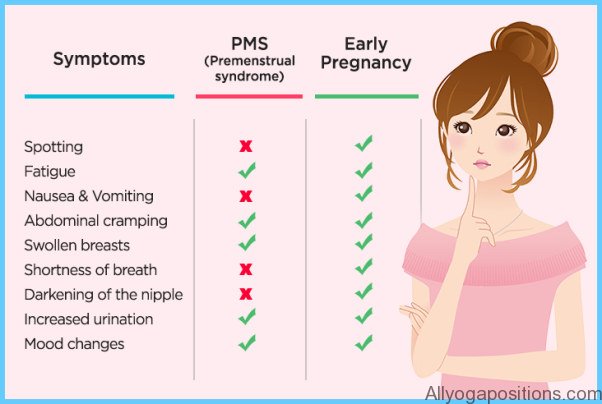Many studies have found that high-carbohydrate meals produce a calming, relaxing effect. Carbohydrate-rich foods like whole-grain bread, cereal, rice and pasta allow an amino acid called tryptophan to get into the brain (amino acids are the building blocks of protein and are found in all foods). The brain uses tryptophan to make the neurotransmitter serotonin. Researchers have linked high serotonin levels with happier moods, and low levels with mild depression and irritability in women with PMS. One study found that meals high in carbohydrates improved the mood in young women within 30 minutes of consumption.2 Another study found that when women with PMS took a high-carbohydrate drink their mood improved within 90 minutes.3
If your mood is affected by PMS, eat high-carbohydrate meals that contain very little protein. High-protein foods like chicken, meat or fish supply the body with more amino acids that compete with tryptophan for entry into the brain. Try pasta with tomato sauce, a toasted whole-grain bagel with jam or a bowl of cereal with low-fat milk.
If your mood needs a boost during the day, reach for a high-carbohydrate beverage. Drop by a pharmacy and pick up a liquid dietary supplement called PMS Escape™. It’s a flavored, powdered drink mix made from a blend of carbohydrates, vitamins and minerals that’s thought to act by boosting the normal level of serotonin in the brain. The product was developed by Dr. Judith Wurtman, a research scientist at Massachusetts Institute of Technology (MIT) and pioneer in the carbohydrate-serotonin connection. You can also try a sports carbohydrate replacement drink available from your local health food or sporting goods store; they’re sold as powder mixes or ready-to-drink and come in a variety of flavors.
Meal Timing
Try to eat once every four to five hours. That means eating three meals and one or two mid-day snacks. This is important to do every day of the month for improved energy levels, but it becomes even more essential during the premenstrual week. One reason is that the levels of neurotransmitters in your brain are susceptible to fluctuations in the levels of nutrients in your bloodstream. So any drastic change in your normal eating pattern—crash dieting, bingeing, or meal or snack skipping—can alter neurotransmitters in your brain and, as a result, alter your mood. Secondly, the hormonal fluctuations of PMS make you more susceptible to a low blood-sugar level. If you’ve ever experienced low blood sugar you know that it can cause low energy, increased appetite and hunger, irritability and headaches. So don’t forget that mid-afternoon snack. It can prevent you from bingeing on potato chips or chocolate.
Low-Glycemic Carbohydrates
There was a time when nutritionists like myself encouraged people to get the majority of their carbohydrates from starchy foods like bread, pasta and rice, rather than simple sugars in desserts, candy and juice. This was because starchy foods have more nutrients than sugar and we thought that they were digested and absorbed in the bloodstream more slowly, leading to more stable blood-sugar or blood-glucose levels and better energy levels. As research continues, our knowledge about carbohydrates grows. We have learned that all starchy foods are not created equal. For example, the carbohydrates in a bagel are absorbed into your bloodstream at a faster rate than the sugar in a can of pop! It turns out that starchy foods vary widely in how quickly they’re converted to blood glucose.
Nutritionists now classify carbohydrate foods according to their glycemic index (GI), or their ability to cause a rise in blood sugar. Foods with a low GI raise your blood sugar more slowly than foods with a high GI. When you eat a food that quickly raises your blood sugar you will get a burst of energy. But this spike in sugar also causes your pancreas to release a large amount of insulin into your bloodstream. Since insulin’s job is to lower your blood sugar, your quick energy boost will be followed by a crash. That can lead to increased hunger and carbohydrate cravings.
Foods with a low GI, on the other hand, take longer to digest and lead to a gradual, slow rise in blood glucose. You don’t get the insulin surge, and the energy from low GI food lasts longer. The glycemic index of a food depends on cooking time, fiber content, fat content and ripeness.
To satisfy your appetite and keep your blood-sugar levels stable for a longer period of time choose low GI foods at meal and snack times. Here are some examples:
If you’re on the go, throw an energy bar in your bag for a mid-day snack. Choose a bar that contains carbohydrates and about 14 grams of protein—e.g., Genisoy™, SoyOne™, Balance® bar, PR Ironman® bar, Zone Perfect® bar.
Dietary Fat
If there’s one more reason to cut back your fat intake, it’s to help minimize your PMS symptoms. A few studies have shown that women with PMS who are put on a low-fat diet suffer fewer and less intense PMS symptoms.4 Researchers have found that diets consisting of 15 to 20 percent calories from fat are associated with less water retention, less weight gain and fewer menstrual cramps.5 A low-fat diet may affect your PMS symptoms by influencing the levels of hormone, especially estrogen, in your body. Use the following chart to help you trim excess fat in your diet.
Choosing lower-fat foods will definitely help you cut back on fat calories. But it’s also important to watch your portion size of animal foods, even those that are lower in fat. When eating meat or poultry, aim for no more than a 3 ounce (90 gram) serving, the size of a deck of cards. And watch those added fats and oils—use less oil, margarine, butter, sauces and dressings in cooking. To help you eat a 15 to 20 percent fat diet, aim for no more than 4 teaspoons of added fat each day.

